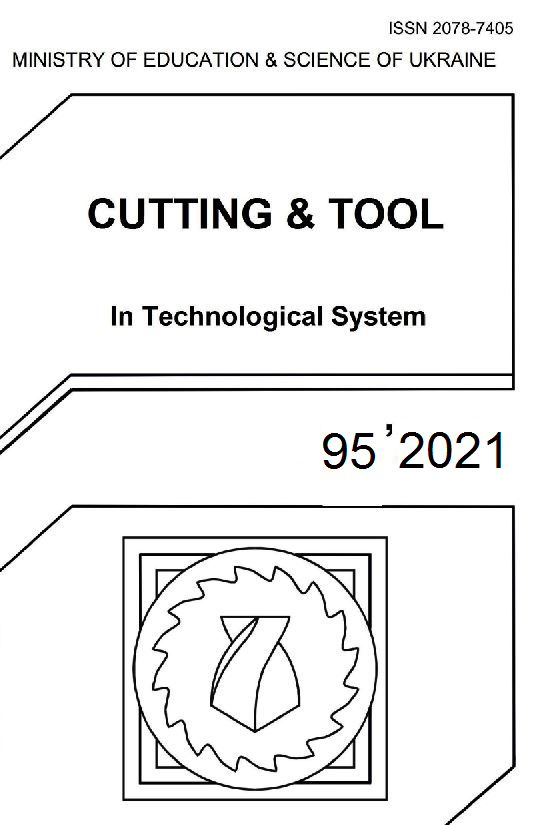DIGITAL TWIN TECHNOLOGY IN LOGISTICS LITERATURE REVIEW
DOI:
https://doi.org/10.20998/2078-7405.2021.95.02Abstract
The digital twin has been released in a number of industries that include logistics as well, with the creation of new research areas. To find the research area, a complex literature analysis is required. At present, publications in scientific journals and publications on the Internet are more important than print-based literature. Because of this, you can get huge results with a single search. It is important that you can analyze these databases well. One method of this analysis is systematic literature review.
References
Armstrong M.M.: Cheat sheet: What is Digital Twin? (2020), https://www.ibm.com/blogs/internet-of-things/iot-cheat-sheet-digital-twin/ (Last opened: 2021.11.22.).
Bányai T., Bányainé Tóth Á., Illés B., Tamás P. (Hungarian book): Ipar 4.0 és logisztika, Miskolci Egyetem, Miskolc-Egyetemváros, ISBN 9789633581827, 2019.
Torres-Carrión és társai: Methodology for systematic literature review applied to engineering and education (2018), 2018 IEEE Global Engineering Education Conference (EDUCON), https://doi.org/10.1109/EDUCON.2018.8363388.
Denyer, D., & Neely, A. (2004). Introduction to special issue: Innovation and productivity performance in the UK. International Journal of Management Reviews, 5-6(3-4), 131–135.doi:10.1111/j.1460-8545.2004.00100.x
What is Digital Twin Technology and how does it work? https://www.twi-global.com/technical-knowledge/faqs/what-is-digital-twin#HowDoesDigitalTwinTechnologyWork (Last opened: 2021.11.22.).
Walsh D., Downe S. (2005) Meta-synthesis method for qualitative research: a literature review, National Library of Medicine https://doi.org/10.1111/j.1365-2648.2005.03380.x.
Greif T., Stein N., Flath. M. C., (2020): Peeking into the void: Digital twins for construction site logistics.
Ginieis M., Sánchez-Rebull M.-V., Campa-Planas F. (2011): The academic journal literature on air transport: Analysis using systematic literature review methodology, https://doi.org/10.1016/j.jairtraman.2011.12.005.
Jörn Petereit, Digital twins and Artificial Intelligence in logistics, https://www.cloudflight.io/expert-views/digital-twins-and-artificial-intelligence-in-logistics-44867/ (Last opened: 2021. 11. 22.).
Kamarási V.; Mogyorósy G. (2015): Szisztematikus irodalmi áttekintések módszertana és jelentősége. Segítség a diagnosztikus és terápiás döntésekhez, Orvosi Hetilap 156 (38), pp. 1523-1531.
Kuehn W., (2018)(Hungarian publication), Digital twins for decision making in complex production and logistic enterprises, htto://doi.org/10.2495/DNE-V13-N3-260-271.
Mobinius Editor (2020). Digital Twins Technology in Logistics 2021: In-Depth Guide, https://www.mobinius.com/blogs/digital-twin-technology-in-logistics (Last opened: 2021. 11. 22.).
Moustaghfir K. (2008): The dynamics of knowledge assets and their link with firm performance, Measuring Business Excellent, ISSN: 1368-3047.
5 Ways Digital Twinning will revolutionize Logistics, https://lot.dhl.com/5-ways-digital-twinning-will-revolutionize-logistics/ (Last opened: 2021. 11. 22.).
Szentesi Sz. (2021) Ellátási láncok optimális kialakításának lehetőségei bizományosan értékesítő étrendkiegészítőket gyártó vállalatnál, Phd értekezés (Hungarian publication).
Schislyaeva, Rostislavovna E., Kovalenko, Alexandrovich E., (2021), Academy of Strategic Management Journal, suppl. Special Issue 2., Arden vol.20. (1-17), e-ISSN: 19396104.
Siemens: Digital Twin, https://www.plm.automation.siemens.com/global/en/our-story/glossary/digital-twin/24465 (Last opened: 2021.11.22.).
Downloads
Published
Issue
Section
License
Copyright Notice
Authors who publish with this Collection agree to the following terms:
1. Authors retain copyright and grant the Collection right of first publication with the work simultaneously licensed under a Creative Commons Attribution License that allows others to share the work with an acknowledgement of the work's authorship and initial publication in this Collection.
2. Authors are able to enter into separate, additional contractual arrangements for the non-exclusive distribution of the Collection's published version of the work (e.g., post it to an institutional repository or publish it in a book), with an acknowledgement of its initial publication in this Collection.
3. Authors are permitted and encouraged to post their work online (e.g., in institutional repositories or on their website) prior to and during the submission process, as it can lead to productive exchanges, as well as earlier and greater citation of published work.

